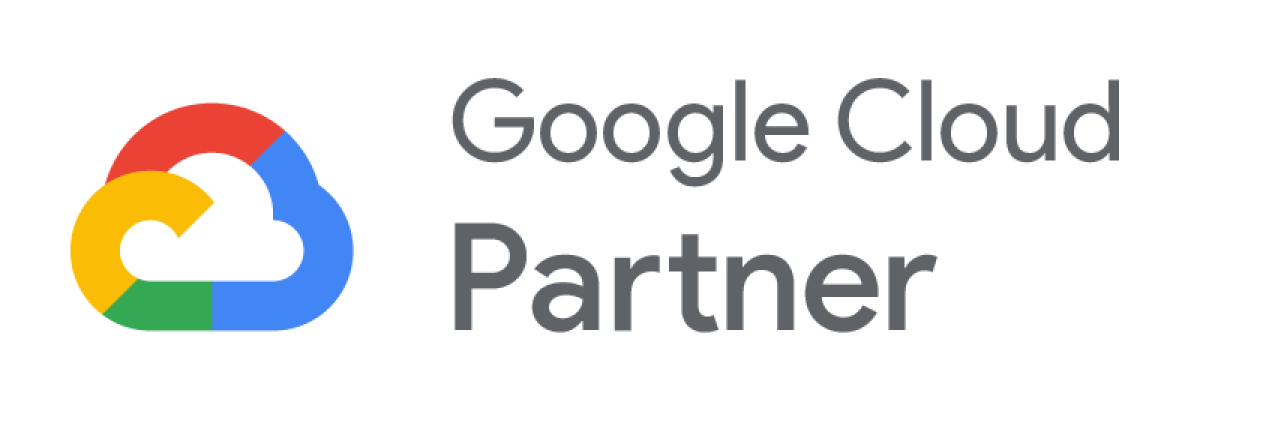As a Google Cloud partner, we pride ourselves in providing world-leading Cloud-based training solutions – led by expert practitioners – that give our clients the skills to succeed.
Over five days, you’ll learn how to build Vertex AI AutoML models without writing a single line of code and build BigQuery ML models knowing basic SQL.
You’ll also be taught how to create Vertex AI custom training using containers; use Feature Store for data management and governance; determine appropriate data preprocessing options for your use case and write distributed ML models that scale in TensorFlow. Finally, you’ll discover how to leverage best practices for implementing machine learning on Google Cloud.
Our Machine Learning on Google Cloud course is available as a private training session that can be delivered via Virtual Classroom, at our training centre in The Shard, or at a location of your choice in the UK.
Course overview
Who should attend:
This intermediate-level course is primarily intended for the following participants:
- Aspiring machine learning data analysts, data scientists and data engineers
- Learners who want exposure to ML using Vertex AI AutoML, BQML, Feature Store, Workbench, Dataflow, Vizier for hyperparameter tuning, and TensorFlow / Keras
What you'll learn:
By the end of this course, you will be able to:
- Build, train, and deploy a machine learning model without writing a single line of code using Vertex AI AutoML
- Understand when to use AutoML and Big Query ML
- Create Vertex AI-managed datasets
- Add features to a Feature Store
- Describe Analytics Hub, Dataplex, and Data Catalog
- Describe hyperparameter tuning using Vertex Vizier and how it can be used to improve model performance
- Create a Vertex AI Workbench User-Managed Notebook, build a custom training job, and then deploy it using a Docker container
- Describe batch and online predictions and model monitoring
- Describe how to improve data quality
- Perform exploratory data analysis
- Build and train supervised learning models
- Optimise and evaluate models using loss functions and performance metrics
- Create repeatable and scalable train, eval, and test datasets
- Implement ML models using TensorFlow / Keras
- Describe how to represent and transform features
- Understand the benefits of using feature engineering
- Explain Vertex AI Pipelines
Prerequisites
To get the most out of this course, participants should have:
- Some familiarity with basic machine learning concepts
- Basic proficiency with a scripting language, preferably Python
Course agenda
- Describe the Vertex AI Platform and how it is used to quickly build, train, and deploy AutoML machine learning models without writing a single line of code
- Describe best practices for implementing machine learning on Google Cloud
- Develop a data strategy around machine learning
- Examine use cases that are then reimagined through an ML lens
- Leverage Google Cloud tools and environment to do ML
- Learn from Google's experience to avoid common pitfalls
- Carry out data science tasks in online collaborative notebooks
- Describe how to improve data quality
- Perform exploratory data analysis
- Describe Big Query ML and its benefits
- Build and train supervised learning models
- Describe AutoML and how to build, train, and deploy an ML model without writing a single line of code
- Optimise and evaluate models using loss functions and performance metrics
- Mitigate common problems that arise in machine learning
- Create repeatable and scalable training, evaluation, and test datasets
- Create TensorFlow and Keras machine learning models
- Describe TensorFlow key components
- Use the tf.data library to manipulate data and large datasets
- Build a ML model using tf.keras preprocessing layers
- Use the Keras Sequential and Functional APIs for simple and advanced model creation
- Understand how model subclassing can be used for more customised models
- Use tf.keras.preprocessing utilities for working with image data, text data, and sequence data
- Train, deploy, and productionalise ML models at scale with Cloud AI Platform
- Describe Vertex AI Feature Store
- Compare the key required aspects of a good feature
- Combine and create new feature combinations through feature crosses
- Perform feature engineering using BigQuery ML, Keras, and TensorFlow
- Understand how to preprocess and explore features with Dataflow and Dataprep by Trifacta
- Understand and apply how TensorFlow transforms features
- Understand the tools required for data management and governance
- Describe the best approach for data preprocessing: from providing an overview of Dataflow and Dataprep to using SQL for preprocessing tasks
- Explain how AutoML, BigQuery ML, and custom training differ and when to use a particular framework
- Describe hyperparameter tuning using Vertex Vizier and how it can be used to improve model performance
- Explain prediction and model monitoring and how Vertex AI can be used to manage ML models
- Describe the benefits of Vertex AI Pipelines



 5 day course
5 day course
 Partner of the Year
Partner of the Year
 Private
Private